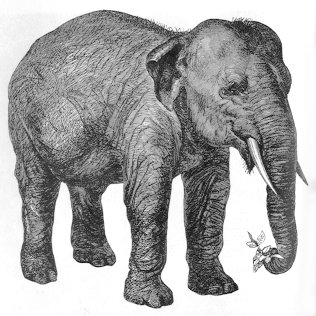The Resistance Movement
Today, we watch creatures evolving around us. The University of Houston's College of Engineering presents this series about the machines that make our civilization run, and the people whose ingenuity created them.
Wherever we aim at a species point-blank, for whatever reason, we drive its evolution, often in the opposite direction from what we ourselves desire.
So says Jonathan Weiner in his book, The Beak of the Finch. Weiner's chapter "The Resistance Movement" talks about the way we can watch evolution in action as we try to eliminate species. Bugs, germs -- even elephants -- are unwilling to be eliminated. And few things are as resilient as viruses.
First Weiner runs through a catalogue of evolving micro-organisms. He tells how you barely had to whisper the word "penicillin" over pneumonia to kill the disease in 1941. Fifty years later, a thousand times greater dose might not eliminate it. Pneumonia bacteria have steadily evolved to resist penicillin.
The reason that AIDS is such a plague is that the AIDS virus is remarkably adept at evolving. Weiner writes,
Individual letters in the [DNA] sequence change. Clusters of letters change, whole chunks of DNA disappear while other chunks insert themselves in new places along the strand. A human body with AIDS is like an entire Galápagos archipelago...
AIDS not only mutates constantly. It also has a biological diversity that gives it means for evolving in any direction that'll protect its survival.
So what about larger creatures? Since poachers go after elephants with large tusks, those tusks threaten elephant survival. Today, one in ten of all young female African elephants has no tusks at all. Those females are pretty safe from hunters.
As the slaughter goes on, we find half the surviving older females with no tusks. They're the ones who keep reproducing. Long-tusked males were once the only ones with harems. Now we're finding tuskless males with harems. The survival of the fittest is rapidly creating a breed of elephants that's of no more use to hunters who've been exterminating them.
An old axiom says that fishermen keep the big ones and throw the little ones back into the sea. Fishermen's nets are designed to do that -- to let the little ones slip through. Now, as the fishing industry grows, species of cod, salmon, and red snapper are getting smaller and smaller.
We humans mutate as well. Once we'd become technological creatures, some two million years ago, our brains began growing. Brains hadn't been so important to our survival, but now they were.
Indeed, human survival depends upon our ability to adapt to viral and bacteriological attack. Diseases like Ebola, which kill us quickly, are like good elephant hunters. They have a hard time keeping a foothold. It's diseases that let us survive for quite a while that're more dangerous -- sickle cell anemia and AIDS.
And we're back to Weiner's remark that aiming point-blank at a species drives its survival. It's a neat paradox, one we'd better understand before we try to wipe out any of the pests that dog our lives.
I'm John Lienhard, at the University of Houston, where we're interested in the way inventive minds work.
(Theme music)
Weiner, J., The Beak of The Finch. New York: Vintage Books, 1995, Chapter 18.
I am grateful to Roger Eichhorn, UH Mechanical Engineering Department for suggesting the topic and providing his copy of the Finch book.
